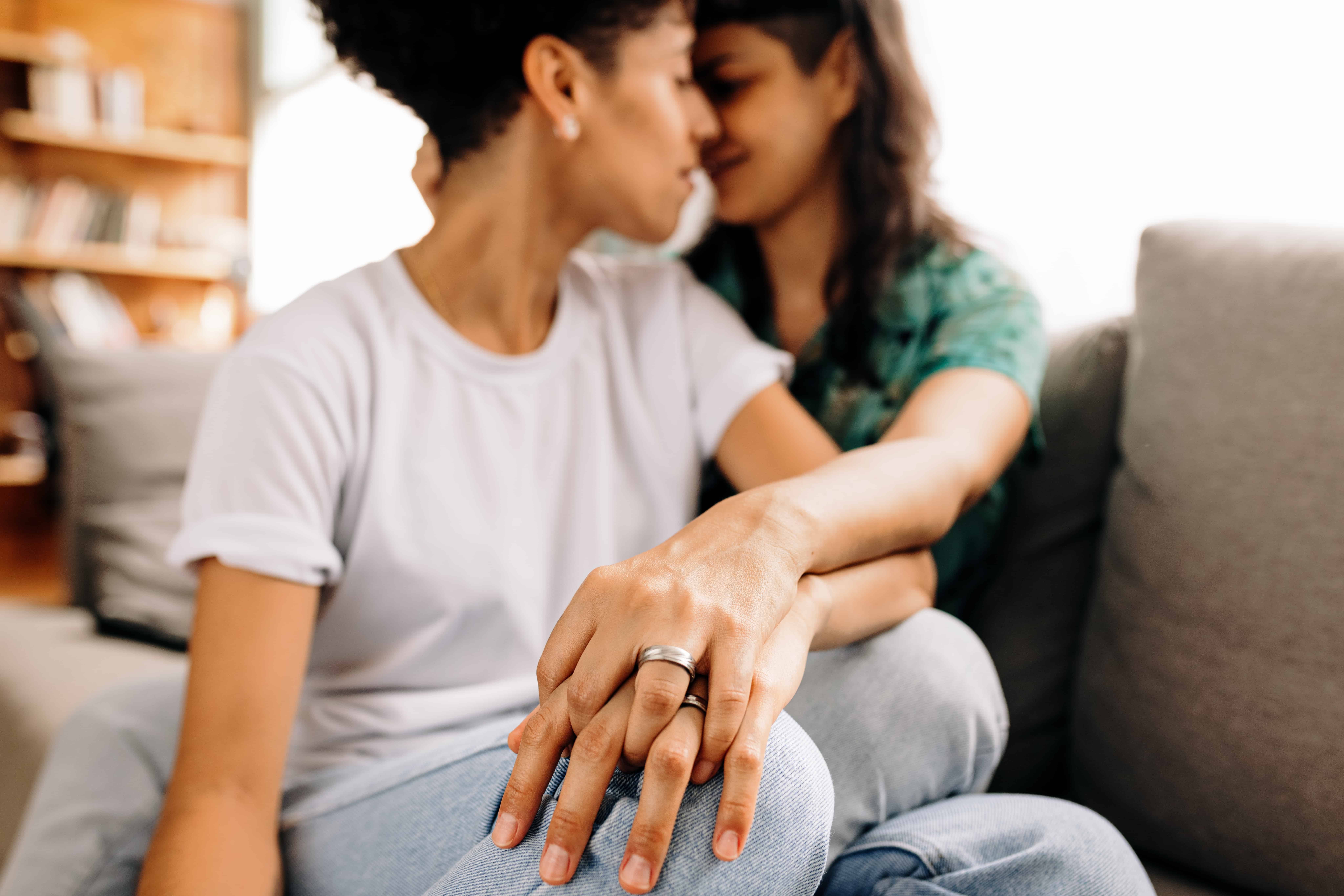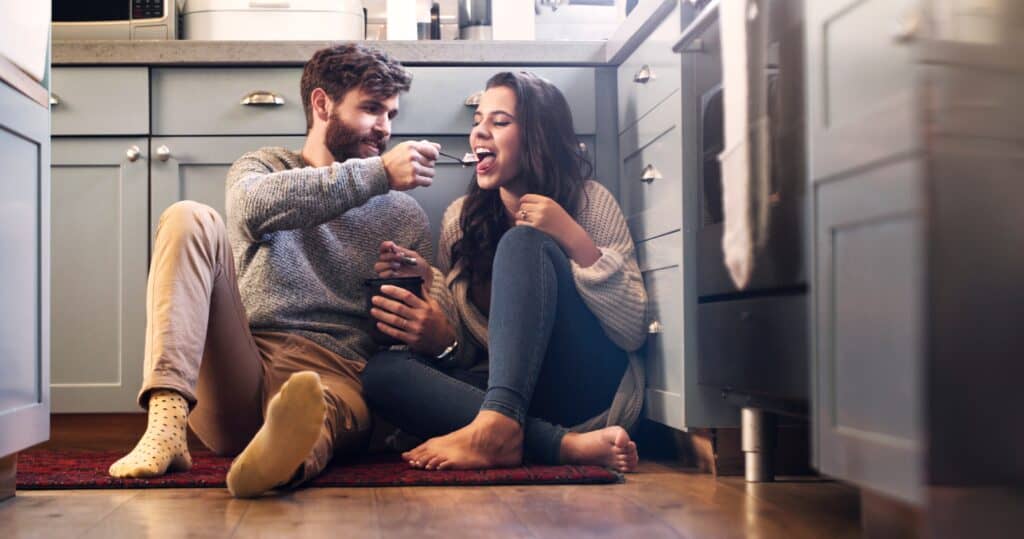When your relationship hits a rough patch, it could be a sign that your leisure time is off. A recent study by Kiersten Dobson and Brian Ogolsky suggests that shared leisure activities, or simply “leisure time” is a great predictor of relationship wellbeing. In short: the more wisely a couple spends their leisure time, the happier they will be.
But what does couple leisure time mean? And are you and your partner doing it right? In this article, we’ll further explore how both of you can get the most out of your moments together.
How to Tell If You’re Spending Your Leisure Time Correctly?
Leisure time involves fostering distraction-free, meaningful moments with your significant other. The purpose of doing something fun (or not-so-fun) together is to deepen the emotional bond between the two of you.
Here’s how to tell whether you’ve been spending your leisure time in a fulfilling way.
1. You Can Tell “Passing Time” From “Spending Quality Time”
Your partner is the first person you see in the morning and the last person you see before bed. Because of this, most couples will swear that they spend most of their time with each other.
However, merely being around this person doesn’t mean you’re spending quality time with them.
The textbook definition of quality time is “time spent in giving another person one’s undivided attention in order to strengthen a relationship.” If you don’t harness your moments together to mindfully connect with your partner, you’re just passing time.

2. The Time You Spend Together Is Intentional and Focused
Lying down side-by-side scrolling through your phones may sound like well-spent couple leisure time.
Granted, the silent presence of your loved one can be comforting, especially when it involves boring chores. However, you’re still spending mindless time together.
In a guest contribution for Marriage.com, certified Gottman Therapist Dr. Dana McNeil, PsyD, LMFT uses phones as an example of how couples should not spend their leisure time.
“The point is to carve out uninterrupted, cell phone free time spent reminding your partner how fun, interesting, and lucky each of you are to be in each other’s lives,” Dr. McNeil says.
3. You’re Alone, Just the Two of You
The findings of Dobson’s and Ogolsky’s study conclude that “shared leisure is particularly beneficial to one’s relationship insofar as it occurs with one’s partner and no one else.”
Being with friends and family is essential to give couples a breather. Still, it’s important to be alone together, in the sense that each other’s presence is fulfilling and pleasurable enough.
4. You Don’t Mistake Leisure Time for “Vacation Time”
As much as we’d wish to, not all of us can go on vacation all the time. But we can create meaningful moments out of our daily lives.
Brigham Young University professor Ramon B. Zabriskie, PhD, analyzed the leisure behavior between families with middle-aged school children. In his words:
“Core leisure activities might include playful dishwashing or fun times at Trader Joe’s, watching TV together, or sharing a nice meal. Core leisure activities are joined by balanced leisure activities, which amount to special, planned events like attending a concert, dining out, or vacations.”
You should view couple leisure time as an opportunity to enjoy great moments together, regardless if you’re at a paradisiac beach or in your living room. It’s about creating a balance between newness, variety, routine, and even idleness.

5. Most Importantly, You Enjoy Each Other’s Company
American psychologist and marriage researcher Dr. John Gottman developed The Sound Relationship House Theory, where he lists the pillars of thriving relationships. In an article by Fatherly, Dr. Dana McNeil explains the theory as follows:
“Like a real house, if something is going on with the slab or in the crawl space and you try to put the enormous weight of a house on it, you’re asking too much of the foundation and will have problems,” McNeil says. “Three things on the lower level – caring, fondness, and admiration – are essential for building the friendship important for the house’s foundation.”
If that foundation is strong, you’ll find mutual joy in the simplest moments. Like best friends, you love being together, and you’re willing to optimize that time if need be.
Ways to Spend Your Leisure Time Right, According to Dr. Gottman
In his 4 decades of researching couples and relationships, Dr. John Gottman was able to track solid patterns in both happy and unhappy marriages. His research yielded over 200 academic articles, and 40 books, and gave rise to the renowned Gottman Method.
Based on several of Dr. Gottman’s findings, here are proven ways to spend couple leisure time the right way.
Using Leisure Time to Get to Know Your Partner Better
Exploring new things about each other is always a valuable experience. In his book The Seven Principles for Making Marriage Work, here’s what Dr. Gottman says about successful couples:
“They tend to know each other intimately — they are well versed in each other’s likes, dislikes, personality quirks, hopes, and dreams. They have an abiding regard for each other and express this fondness not just in the big ways but in little ways day in and day out.”
For instance: when playing a board game, you’ll get to know your partner’s attitude when they get mad or excited. When discussing the future, you may uncover hopes and dreams you never knew about. The more you learn about your significant other, the more you can do to ensure their happiness.
Turning Towards Instead of Away
In the Gottman glossary, “turning towards” means recognizing emotional bids and responding to them and giving them back.
A “bid” is an attempt for positive connection from one partner to another. If your beloved caresses your hand, that’s a bid for affection. If you ask them an open-ended question, that’s a bid for attention.
“In the healthiest relationships, both partners are comfortable making all kinds of bids,” Brittle says.
Especially during leisure time, bidding (and responding to bids) is essential. In a study with newlyweds, Dr. Gottman revisited each couple after six years. He found that couples that stayed married turned towards each other 86% of the time, while divorced couples only turned towards each other 33% of the time.
Date Night!
We wouldn’t be talking about leisure time without mentioning date night.
Date nights don’t have to be glamorous to account for leisure time, according to Dr. Dana McNeil. In fact, some of her go-to date night ideas include hiking, rock climbing, attending free concerts in the park or going to a part of town you’ve never been to.
Of course, it’s important to keep things fresh and interesting whenever possible. Whether it be cooking a new recipe or visiting a nearby town, every date can be special as long as you infuse a touch of novelty.
Dedicating Extra 6 Weekly Hours to the Relationship
In Gottman’s world-renowned workshop, The Art and Science of Love, attendees discovered that successful couples dedicated 6 extra weekly hours to their relationship.
“Six hours?!” you might be thinking. “I don’t have time for that.”
Well, that’s what you think. Take a look at the following formula, and you’ll notice how easily you can fit a few extra hours into your routine:
Partings (10 minutes a week): Before saying goodbye in the morning, learn one thing that’s going on in your partner’s life.
Reunions (1 hour and 40 minutes a week): Once you and your partner get home, share a six-second kiss (which Dr. Gottman has dubbed a “kiss with potential”) and have a stress-reducing conversation about your day.
Appreciation and Admiration (35 minutes a week): Share and/or record small traits you admire in your partner.
Affection (35 minutes a week): Cuddle before bed or kiss each other goodnight. No phones!
Date Night or “We Time” (2 hours once a week): Turn toward each other, ask open-ended questions, and appreciate each other’s presence.
State of The Union Meeting (1 hour a week): Discuss areas of concern in the relationship.
While quality time may be limited, you can always find time to connect. Even for just a few minutes a day.
Showing Affection, Always
Touching. Caressing. Hugging. Holding hands. These are all tender ways to express your love for your significant other.
Interestingly, holding hands can lead to a phenomenon known as interpersonal synchronization. This synchronization can align your breathing and heart rate, potentially alleviating pain. Therefore, you should express affection through physical touch as often as possible.

Planning For a Romantic Getaway?
In his book The Relationship Cure, Dr. Gottman stresses the importance of vacations as a “ritual of connection.”
So, if a getaway is in the cards, why not take your couple leisure time to scenic San Diego?
Spend an immersive couples counseling retreat with Dr. Dana McNeil and other Gottman-trained therapists. This 3-day journey is the ideal opportunity to reconnect with your partner, with marriage experts guiding you through a healthier, stronger relationship.
This intensive couples getaway is equivalent to months of 50-minute couples counseling sessions. Think of it as a vacation where you’ll learn to recover, communicate, and grow as a couple.
Want to know more about it? Contact us for a free consultation today!

